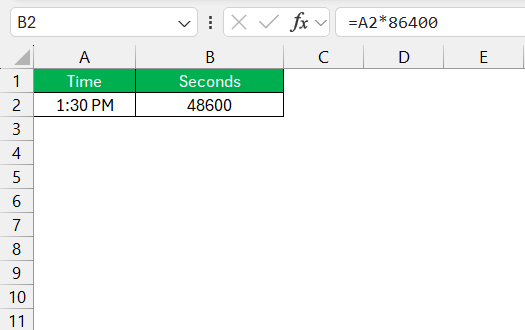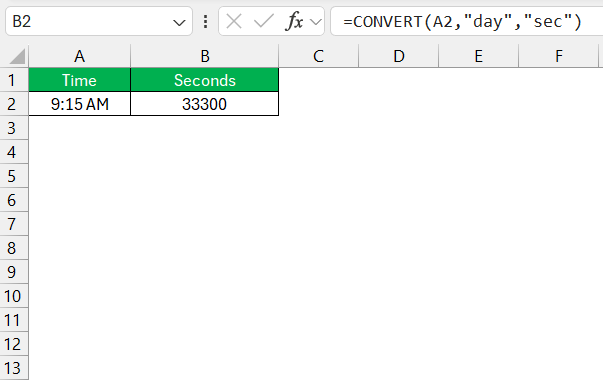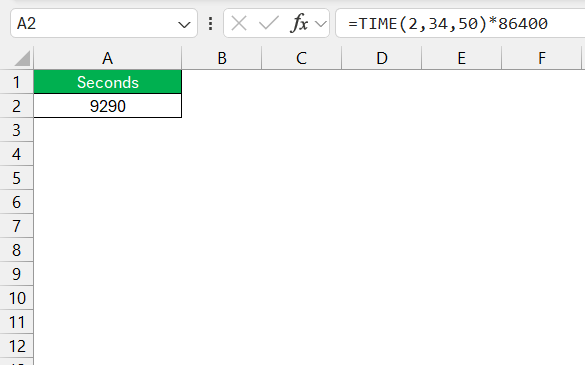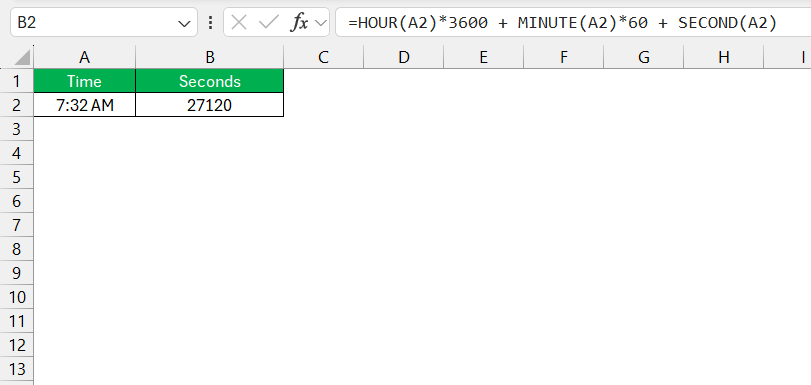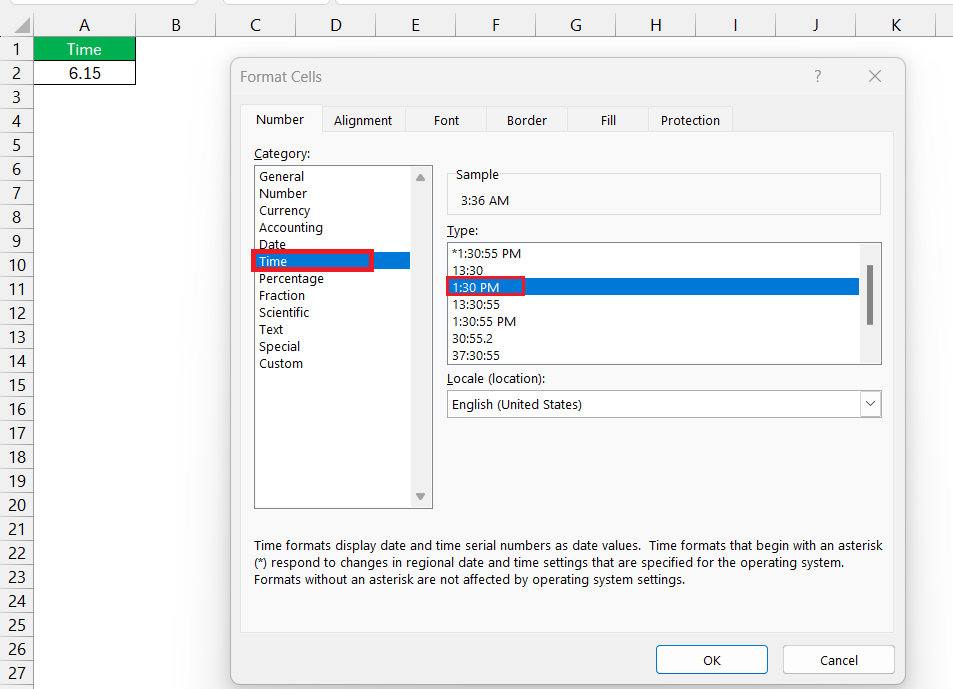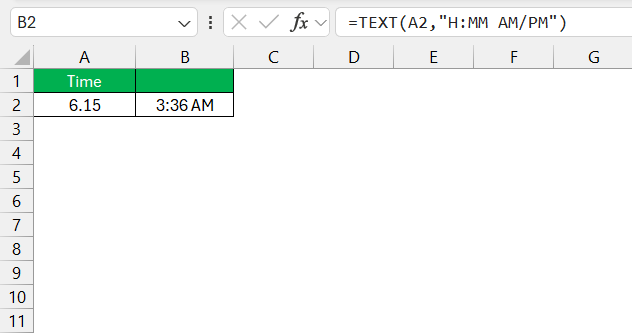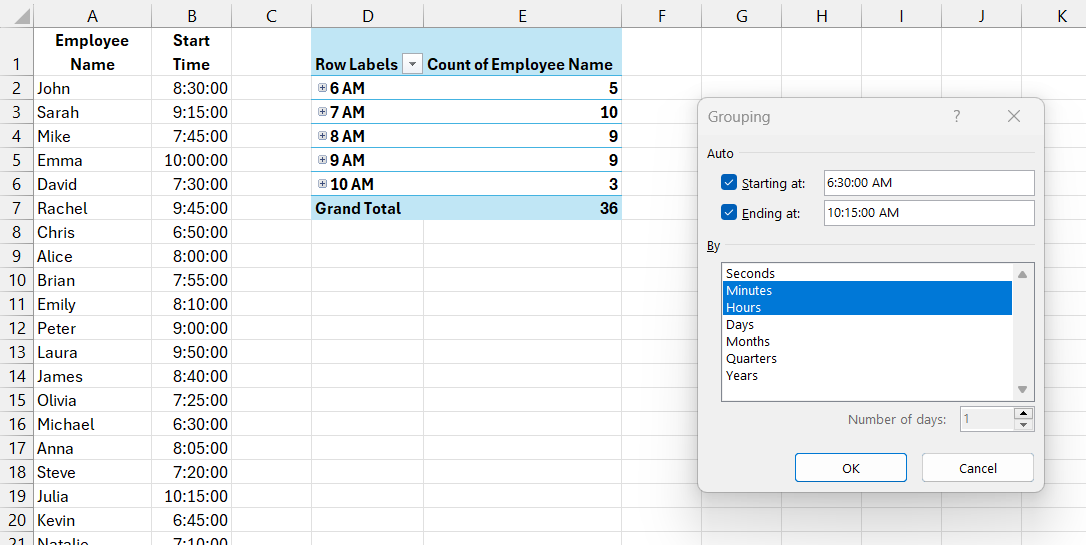If you’ve ever worked with time data in Excel, you’ve likely encountered a situation where you needed to convert that time into seconds. Whether you’re tracking tasks, measuring intervals, or performing calculations, converting hours, minutes, and seconds into a simple total can make your data far easier to work with. I’ll walk you through how to do this in Excel step by step, so you can get the numbers you need without the guesswork.
Key Takeaways:
- Correct time formatting is essential to avoid calculation errors in Excel.
- Excel represents time as serial numbers, making time calculations possible.
- To convert time to seconds, multiply by 86400, the number of seconds in a day.
- Functions like HOUR, MINUTE, and SECOND help break down and convert time components.
- Common issues, like decimal or text time formats, can be fixed with proper formatting or the TEXT function.
Table of Contents
Introduction to Time Conversion in Excel
Understanding the Importance of Time Formatting
Mastering time conversion in Excel begins with a grasp of time formatting. Imagine meticulously entering data, only to have all the times off because they’re not formatted correctly. Excel has a keen eye for detail, and it treats time as a part of a 24-hour day, rather than just numbers.
This is why we must ensure the cells are primed in the right format. It can be the difference between a jumbled set of digits and a perfectly calculated schedule that everyone can make sense of.
The Foundations of Time as a Serial Number
Excel is more than just a grid for data; it’s a calculating machine that sees time as serial numbers. A day is represented as the number 1, which then translates into fractional parts for hours, minutes, and seconds. This concept is critical because it lays the groundwork for all sorts of time manipulations within Excel.
From the basic to the advanced, it allows us to perform math on time itself—be it to track hours worked, to calculate time differences, or simply to organize schedules in a chronological fashion. Understanding this is like holding a backstage pass to the world of Excel’s time conversion tricks. It allows us to work seamlessly across different time-related functions and formulas.
Step-by-Step Guide to Converting Time to Seconds
Preparing Your Excel Data for Conversion
Before diving into the deep end of time conversion, we must tidy up the pool – that is, prepare our data. Ensuring that Excel recognizes our time data correctly is tantamount to preventing the kind of headache associated with data errors.
We must check, and double-check, that our cells are formatted as ‘Time,’ paving the way for a successful conversion experience. I like to say, “A moment in preparation can save an hour of frustration.” And believe me, it’s no fun trying to convert a time value that Excel reads as plain text or a General format. It can scramble your results faster than eggs on a hot stove.
Implementing the 86400 Second Principle
Once our data is shipshape, it’s time to implement the 86400-second principle. This magic number is the total count of seconds in a single day, derived from multiplying 24 hours by 60 minutes and then by 60 seconds.
By multiplying an Excel time value by 86400, we can convert it to seconds in a snap. For instance, half past one translates into a fraction—1:30 PM is 13.5/24—when multiplied by 86400, it gives us the number of seconds past noon.
It’s essentially turning the abstract concept of time into something tangible that we can calculate with. This principle is an essential gear in the clockwork mechanics of Excel time manipulation and will serve as a go-to tool for many time conversion needs.
Simplifying Complex Times with Excel Functions
Using CONVERT function
Excel comes with a suite of built-in functions designed to take the heavy lifting out of conversions. The CONVERT function is particularly powerful, offering a straightforward way to change time units with crystal clarity. You just need the value, the unit you’re converting from, and the target unit.
Whether it’s turning hours into seconds or days into minutes, Excel’s built-in functions handle it with finesse and efficiency. Using these not only simplifies our work but also reduces the room for error—an essential consideration when working with time-sensitive data.
TIME function
Sometimes, you may not have a pre-entered time but need to input specific hours, minutes, and seconds directly into your formula. Excel’s TIME function comes in handy here.
Let’s say I want to convert 2 hours, 34 minutes, and 50 seconds into total seconds. I can use the following formula:
=TIME(2,34,50)*86400
In this formula:
- The first argument 2 represents hours.
- The second argument 34 represents minutes.
- The third argument 50 represents seconds.
The result would be 9290 seconds.
Hour, Minute, and Seconds function
To begin, enter your time in Excel using the format hh:mm in cell A2. Then, use the HOUR, MINUTE, and SECOND functions to break down the time into its components:
- I use the HOUR function to grab the hour component of my time in A2 and multiply it by 3,600 – this converts the hours into seconds.
- Then, I take the MINUTE function to fetch the minute portion and multiply that by 60 to convert the minutes into seconds.
- Finally, I use the SECOND function to get the remaining seconds and add them directly to my total.
To convert this time to seconds, apply the formula: =HOUR(A2)*3600 + MINUTE(A2)*60 + SECOND(A2). This will give you the total seconds for any time entered.
Troubleshooting Common Issues during Conversion
Addressing Decimal and Text Time Format Challenges
Often, when we’re neck-deep in time data, we might see our results as decimals instead of the familiar time format. That’s Excel’s way of revealing the numerical value behind the scenes. We need to right this by converting the cell’s format to display time correctly, ensuring that our brain doesn’t have to do mental gymnastics to interpret a 6.15 as 3:36 AM.
Moreover, when dealing with text format challenges, we can’t just swap the cell formatting—Excel will serve us gibberish in numerics instead of time. The TEXT function becomes our friend, letting us create a text representation of a time value in any format we specify, preserving our precious time data.
Enhancing Your Time Data Analysis
Integrating Time Conversion with Pivot Tables
Pivot Tables serve as our trusty sidekick in the data analysis narrative. Integrating time conversion with Pivot Tables opens a new chapter in dissecting and displaying our data. It allows us to group and summarize time-based information in meaningful ways.
Say we want to assess employee performance over time; with Pivot Tables, we can swiftly convert seconds back to hours for a more intuitive representation.
Furthermore, we can create calculated fields within these tables to showcase our data in seconds, minutes, or hours—whichever tells our story best. Diving into this integration enriches our Excel toolbox and transforms raw data into insightful, actionable information.
Deriving Insights from Time-Based Data
Time-based data doesn’t just tell us when; it can reveal the how, the why, and the what next. By converting time into uniform units like seconds, we can compare it across various parameters, uncovering patterns that were not obvious at first glance.
For instance, analyzing call center data in seconds can help us understand peak times and call durations, leading to better staffing decisions. Similarly, in manufacturing, tracking machine runtimes in seconds could signal maintenance needs before breakdowns occur.
By focusing on these minutiae, we can derive insights that have the power to streamline processes, enhance productivity, and even save costs. In essence, these time-based data stories hold the key to optimizing our operations and strategies.
FAQs on Converting Time to Seconds in Excel
How do you convert time to seconds?
To convert time to seconds in Excel, I multiply the time by 86400, the number of seconds in a day. The formula looks like this: =A1*86400. Just ensure that the original time is formatted correctly before applying the formula.
How Can I Convert Time Exceeding 24 Hours?
If I need to convert time exceeding 24 hours, I use a format that can accommodate longer durations. In the Format Cells dialog box, I specifically choose a time format showing an hour value greater than 24. This ensures accurate representation and calculation of extended hours.
What Should I Do If My Time Format Is Returning Errors?
If the time format is returning errors, I first confirm that the cells are formatted as ‘Time’ and not ‘General’ or ‘Text’. If the issue persists, I use the ‘Text to Columns’ wizard or formulas like TIMEVALUE() to correct the formatting, ensuring Excel interprets the data as time.
How do I convert hh mm ss to seconds in Excel?
To convert hh:mm:ss to seconds in Excel, I create a formula to parse each component and multiply by its respective seconds value: =(HOUR(A1)*3600)+(MINUTE(A1)*60)+SECOND(A1). This formula calculates the total seconds for the given time.
What are the limitations of converting time to seconds in excel?
A key limitation in Excel is that the standard hh:mm:ss format only supports up to 24 hours. Times exceeding this must be managed differently, as Excel doesn’t inherently process periods longer than a day in the same format. Also, Excel can’t natively handle milliseconds or microseconds in time conversions. These require additional formulas to approximate the conversion, potentially complicating the process and introducing room for rounding errors.
John Michaloudis is a former accountant and finance analyst at General Electric, a Microsoft MVP since 2020, an Amazon #1 bestselling author of 4 Microsoft Excel books and teacher of Microsoft Excel & Office over at his flagship MyExcelOnline Academy Online Course.

